GreenCast in UK and Ireland - BTME SEMINAR - MANAGING STRESS

Over 130 greenkeepers and agronomists attending a seminar on turf stress at BTME this week (21-23 January 2014), heard Syngenta Turf Technical Manager, Dr Simon Watson highlight how new turf agronomics that utilise exciting combinations of fungicides, growth regulators and wetting agents could alleviate plant stress and enhance turf quality - to produce consistently improved playing conditions right through the year.
Syngenta research has identified important stress relieving properties in some of the company's key products that, individually, contribute to improving plant health, but collectively show cumulative synergistic benefits that can significantly enhance turf quality.

|
Dr Simon Watson's BTME presentation - as part of the BIGGA Continue to Learn programme - gave over 130 greenkeepers and agronomists an insight into the causes of turf stress - a swell as some practical pointers to redress physiological imbalances within the turf plants. |
Dr watson highlighted that creating the playing surface quality to meet the increasingly stringent demands of today's golfer imposes immense stress on turf. "Together with tough environmental conditions dictated by weather extremes, polluted air quality and a range of other stresses, the result is turf plant health being constantly assailed by the challenge of free radicals.
"Free radicals are a product of normal cellular metabolism, but during periods of stress their numbers can increase significantly," warned Dr Watson. "These highly-active free radicals move around within the plant, bombarding healthy cells in an effort to equalize their electron imbalance. In the process, healthy plant tissue can be irrevocably damaged, and consequently turf quality suffers."
Dr Watson explained that, under normal growing conditions, the plant's natural antioxidant mechanisms counter the effects of free radicals, or Reactive Oxidative Species (ROS). However, when a plant is under stress the production of free radicals can overwhelm the level of antioxidants - which results in oxidative stress, with symptoms including wilting, loss of colour and, ultimately, cell death.
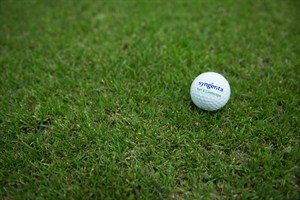
| 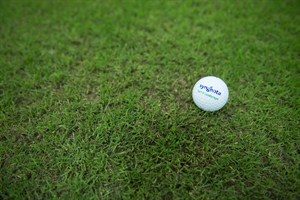
|
TREATED | UNTREATED |
Turf research trials on the Syngenta stand at BTME demonstrated how treatment programmes could help to create better playing surfaces and, by stopping watering prior to the event, how treated turf was better able to withstand stress of induced drought conditions. |
He reported research with Heritage Maxx and Primo Maxx that had identified powerful antioxidant activity with both products that countered the effects of free radicals. "Trials with the Heritage Maxx active ingredient, Azoxystrobin, have shown a 75% reduction in the levels of free radicals in plants subjected to stress. There was also a 50% reduction in leaf damage from ozone injury associated with environmental pollutant exposure.
"Stimulating the level of antioxidant can protect from the damaging effects of pollutants, as well as maintaining green and healthy leaf when plants are under stress attack," he advised.
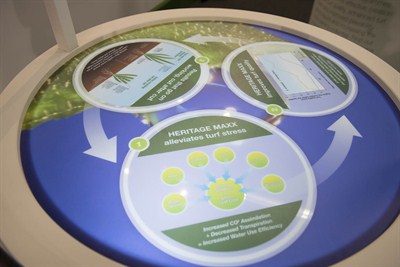
|
| Research has shown the activity of Heritage Maxx not only contyrols disease, but can physically help plants resist the effects of stress by boosting anti-oxidants in the leaf. |
Further trials on turf grass in the US had identified Heritage treated greens were better able to withstand the effects of water stress, with less wilting where irrigation or rainfall was restricted. Treated plants subjected to water stress showed higher shoot density and more leaf blades per plant, compared to untreated. The study concluded that pre-stress applications of Heritage Maxx enabled greater stress tolerance, increased rooting and improved shoot counts and density - resulting in enhanced turf quality.
He added that these effects are over and above the turf disease control achieved from the systemic Heritage Maxx treatments over the summer for Anthracnose, Microdochium (Fusarium) Patch and soil borne Take-All and Fairy Ring. "Importantly, improvements in turf quality from summer Heritage Maxx applications were still being seen right through the winter, which can be attributed to the healthier and stronger plants."
Dr Watson believed the physiological effects of Primo Maxx on turf plants could also further contribute to stress relief, resulting in consistently improved turf quality. "With Primo Maxx we have seen a 40% increase in anti-oxidant activity, to 'mop up' free radicals in turf plants and alleviate the effects of stress. Primo Maxx is the only growth regulator where this has been observed," he said.
"When that is combined with enhanced rooting, greater plant density and increased chlorophyll concentration in the leaf, all improvements seen with Primo Maxx programmes, there is the real opportunity to enhance turf health." Stronger turf has been shown to naturally limit the effects of disease infection and recover faster.
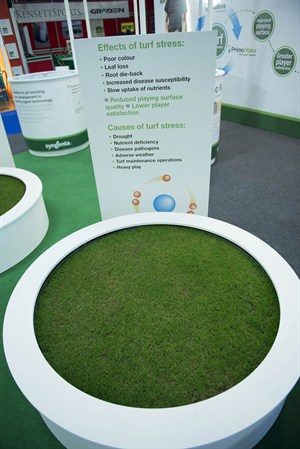
| 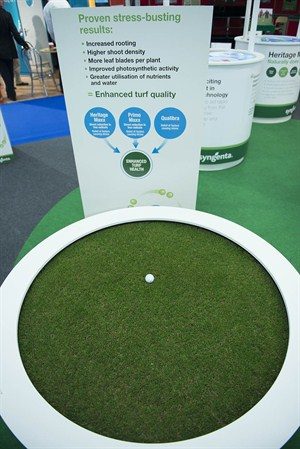
|
The effects of stress (above, left) can be effectively mitigated with treatments aimed at alleviating its causes, or combinations of products that both enhance plant health and boost its cabability to overcome the complex multiple interactions of stress factors (right). |
And the benefits for stress relief and turf quality have been further demonstrated with the addition of a Qualibra wetting agent programme, alongside Heritage Maxx and Primo Maxx treatments. "We know that retaining soil moisture evenly through the soil profile enables turf plants to develop greater root mass; which in turn allows plants to take-up and utilise water and nutrient resources more efficiently," advised Dr Watson.
Programmes of Primo Maxx and Qualibra designed to improve rooting and prevent the effects of Dry Patch, also help to alleviate the stresses imposed on turf plants by water deficiency and heat over the summer. Furthermore, such programmes will provide smoother and more even-running surfaces, consistently identified as the most desirable feature of greens for players.
"Golfers are becoming ever more demanding for consistent and higher quality playing conditions. The quality of the course presented by the greenkeeping team remains the primary attraction for any golf club," he added. "Agronomics that adopt exciting new combinations of technologies can further enhance turf plant health and surface quality to maintain player satisfaction that is essential for a sustainable business operation."
